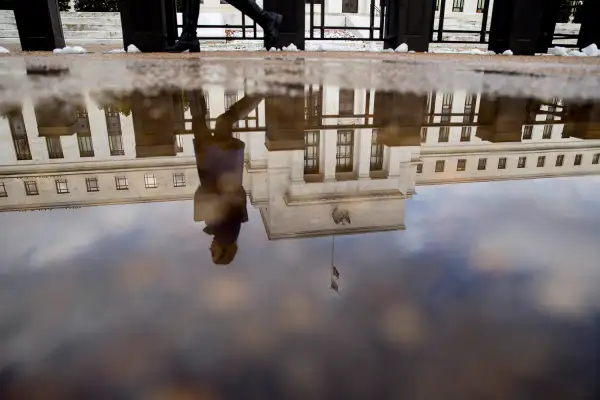Why Interest Rates Won't Get Back to Normal Until at Least 2025
Money is not a client of any investment adviser featured on this page. The information provided on this page is for educational purposes only and is not intended as investment advice. Money does not offer advisory services.

A week after the Federal Reserve refused to raise interest rates from their historic lows, Fed chair Janet Yellen told Congress that there is no "fixed timetable" for lifting or "normalizing" short-term borrowing costs.
What Yellen didn't tell Congress is that even if the Fed were to raise rates in December, as many economists are currently predicting, rates probably won't get back to normal for perhaps a decade if not longer.
How's that?
Historically, the federal funds rate—what banks charge one another on overnight loans—has stood at about 5% on average, which is a far cry from today's range of 0.25% to 0.50%. Of course, that long-term average includes the sky-high rates of the 1970s. If you look at just the past 20 years, short term rates have averaged 3.7%.
The Fed's Trajectory
After the central bank's September meeting, Yellen noted at a press conference that "the median projection for the federal funds rate rises only gradually to 1.1% at the end of next year, 1.9% at the end of 2018, and 2.6% by the end of 2019." That's still about 1 percentage point below the historic average.
Be that as it may, let's assume that everything goes as planned and sometime in 2019, short-term borrowing costs stand at 2.6%.
What are the odds that between now and 2019, the economy doesn't slip into another recession?
Close to nil. Historically, the average economic expansion has lasted 58.4 months, or just under five years, according to the National Bureau of Economic Research, the organization of economists that is seen as the official record-keepers of business cycles.
The Next Downturn
The current economic expansion, which began in June 2009, is now more than seven years old. By the end of 2019, this economic recovery will be 10+ years old, which would make it the longest recovery ever. Since 1857, there's actually been only one cycle that ever made it to 10 years: the 1990s tech boom.
Assuming interest rates hit 2.9% by the end of 2019, as the Fed is projecting, a recession at that juncture would mean the central bank will likely have to turn right back around and start trimming rates to boost the economy.
Since World War II, the average recession has lasted approximately one year. And in the past three recessions, the Fed has cut short-term rates by about 3 percentage points. If the next downturn follows form, the Fed will have to cut rates from 2.9% in 2019 back down to about zero by 2020.
The Subsequent Rebound
The Fed rarely starts to worry about the economy overheating until the very late stages of a recovery. With the average economic expansion lasting about five years, that means the Fed won't start raising rates until 2024—and rates won't get anywhere near the historic 3.7% average until 2025 at the earliest.
In other words, be prepared to wait for a very long time.
